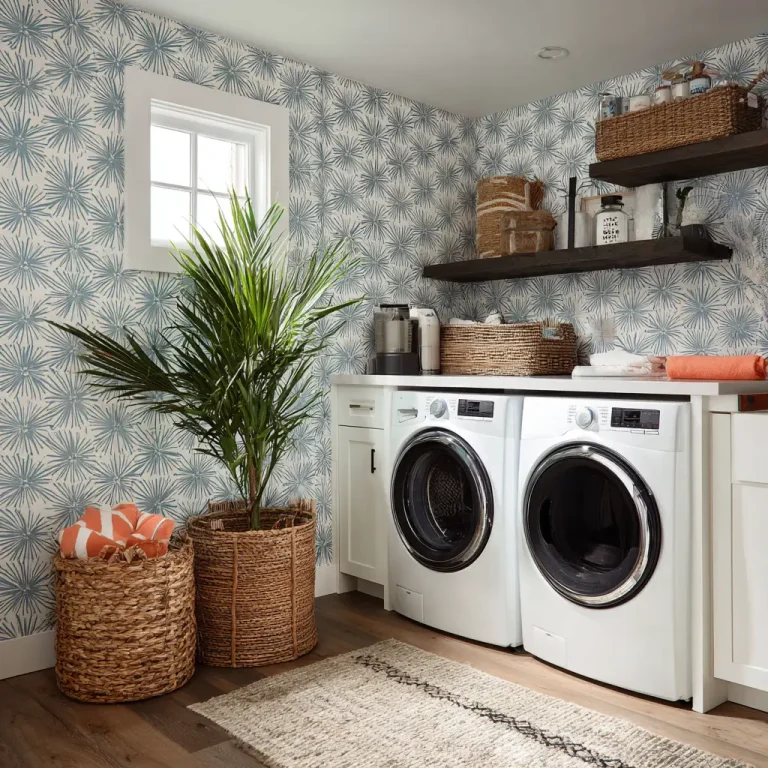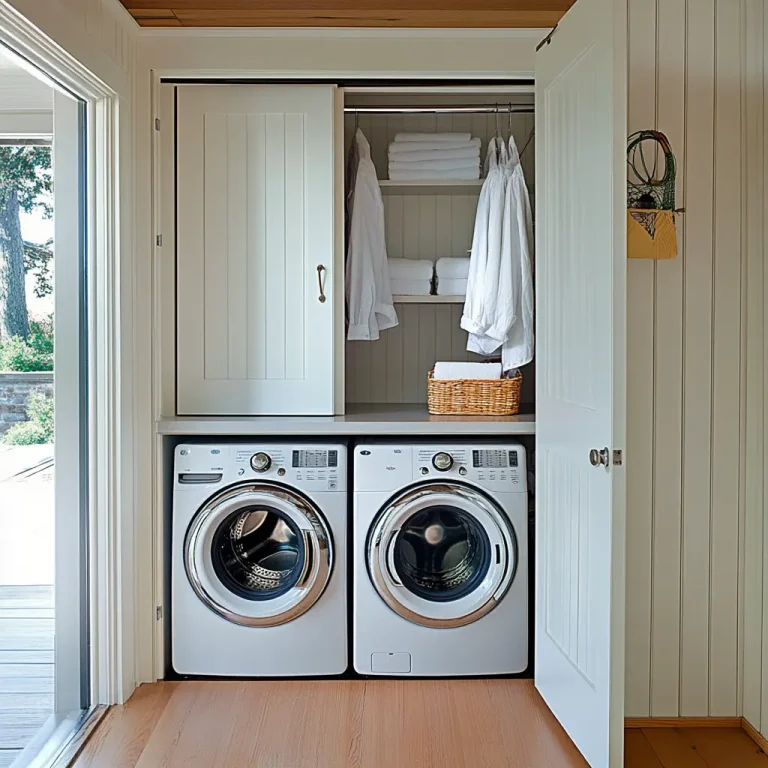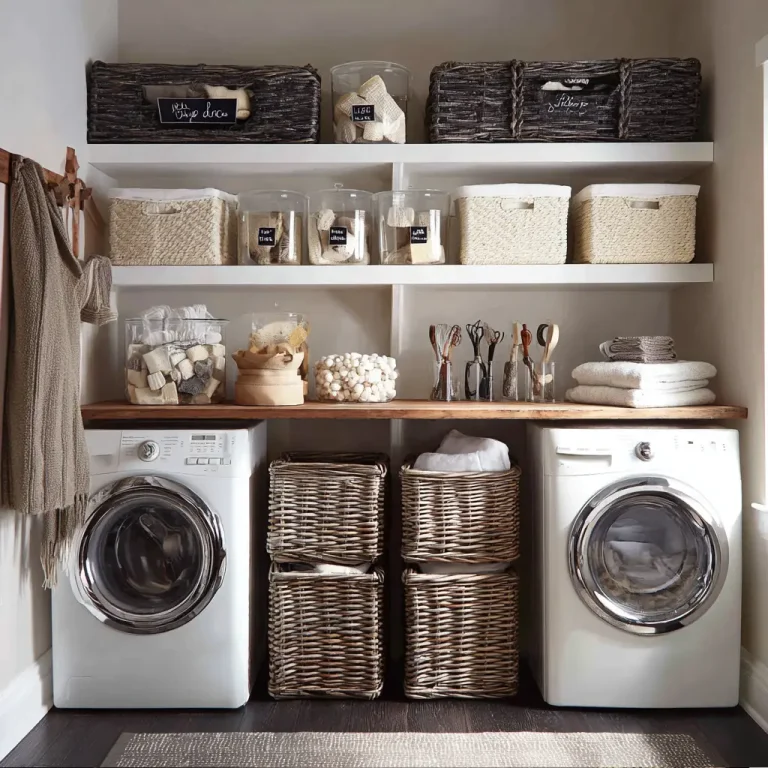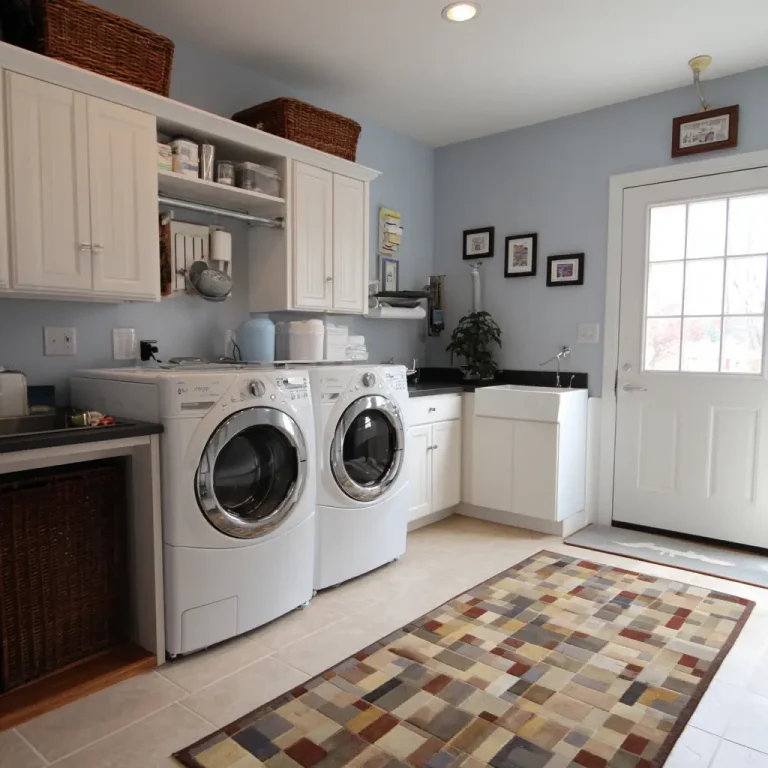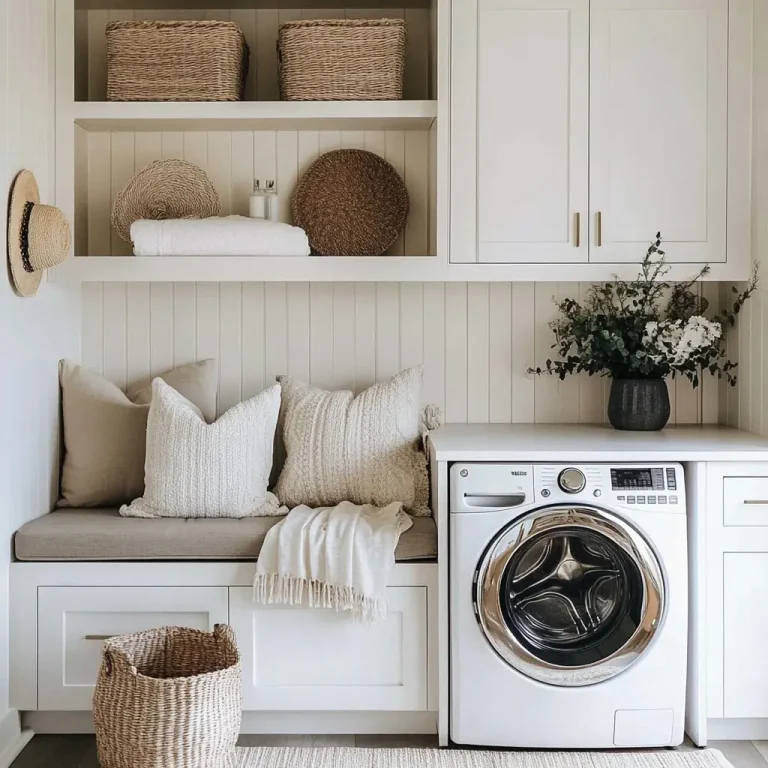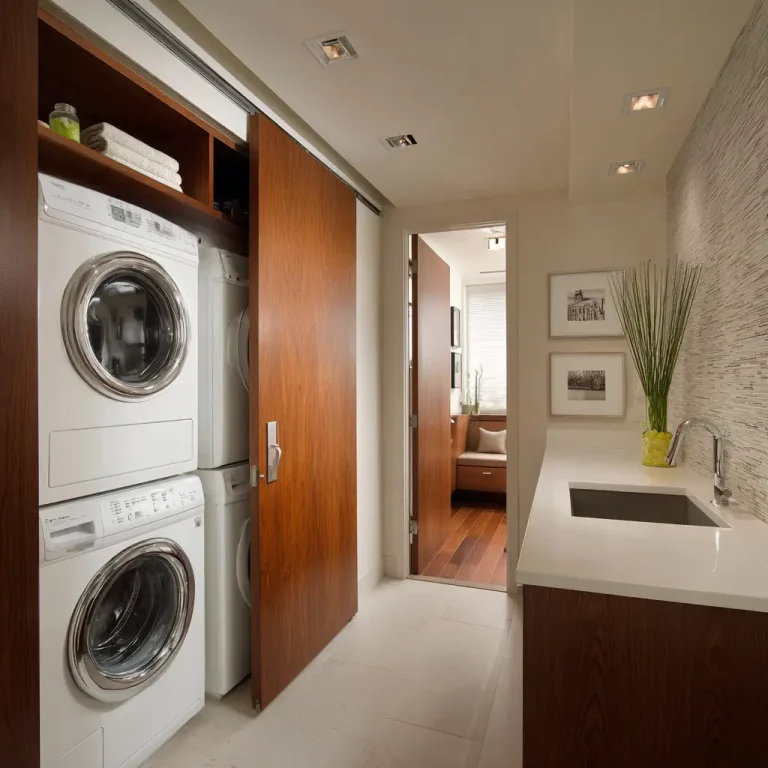15 Basement Laundry Room Ideas for Unfinished Spaces
If your basement is unfinished, it can be tempting to ignore the idea of turning it into a usable laundry space. But even without drywall, tile, or ceiling panels, you can still create a functional and welcoming laundry area that feels intentional. From budget-friendly DIYs to clever organization tricks, here are 15 ideas that can help you reimagine your unfinished basement into a practical laundry room.
1. Add Peel-and-Stick Flooring
Concrete floors can feel cold and uninviting—not to mention tough on your feet. Peel-and-stick vinyl tiles or planks offer an easy upgrade. They’re water-resistant, come in a variety of patterns and finishes (including wood-look and stone), and can be installed without special tools. This is one of the fastest ways to define your laundry area while also protecting the floor.
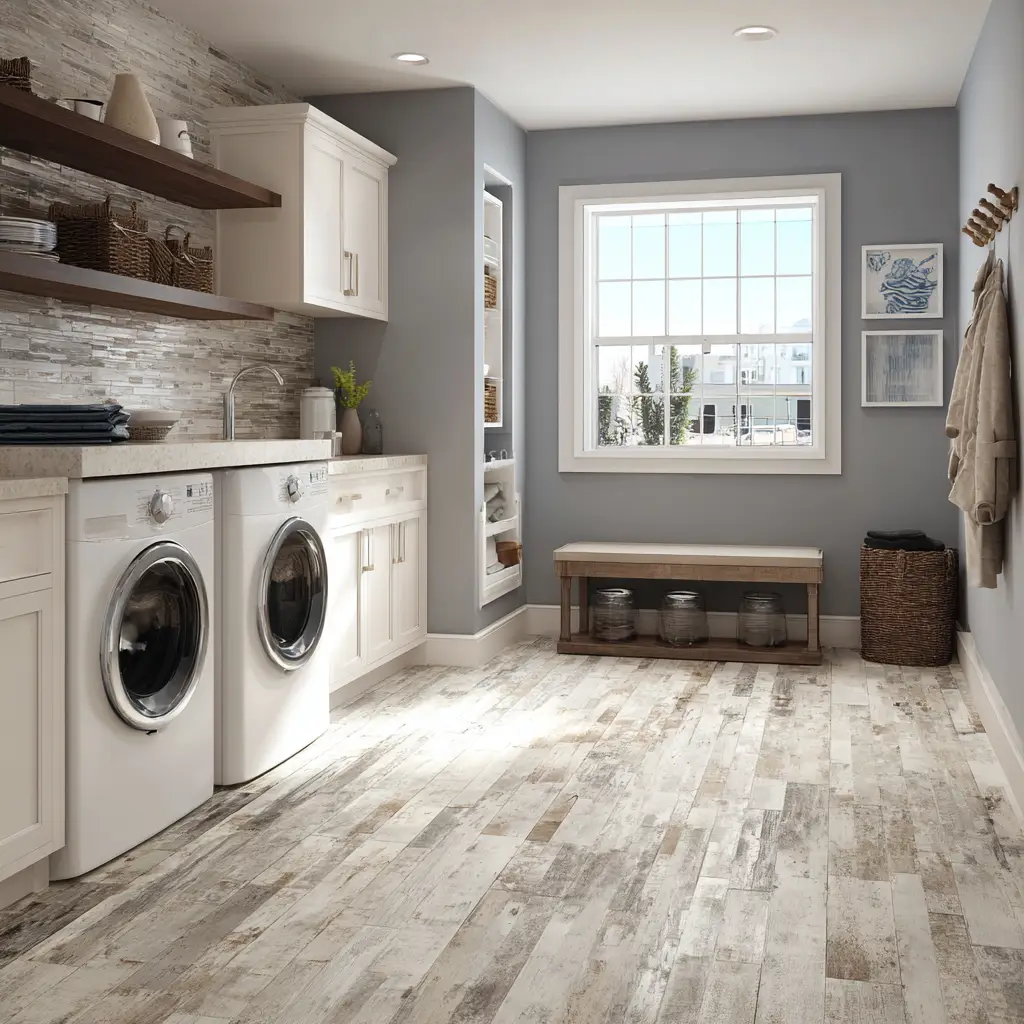
2. Install a Floating Shelf System
Open shelving is ideal in unfinished basements where space is limited and walls might not support heavy cabinetry. Floating shelves give you vertical storage for laundry essentials like detergent, fabric softeners, and dryer sheets. You can also add small decorative items like a faux plant or framed print to give the area some character and charm without cluttering it.
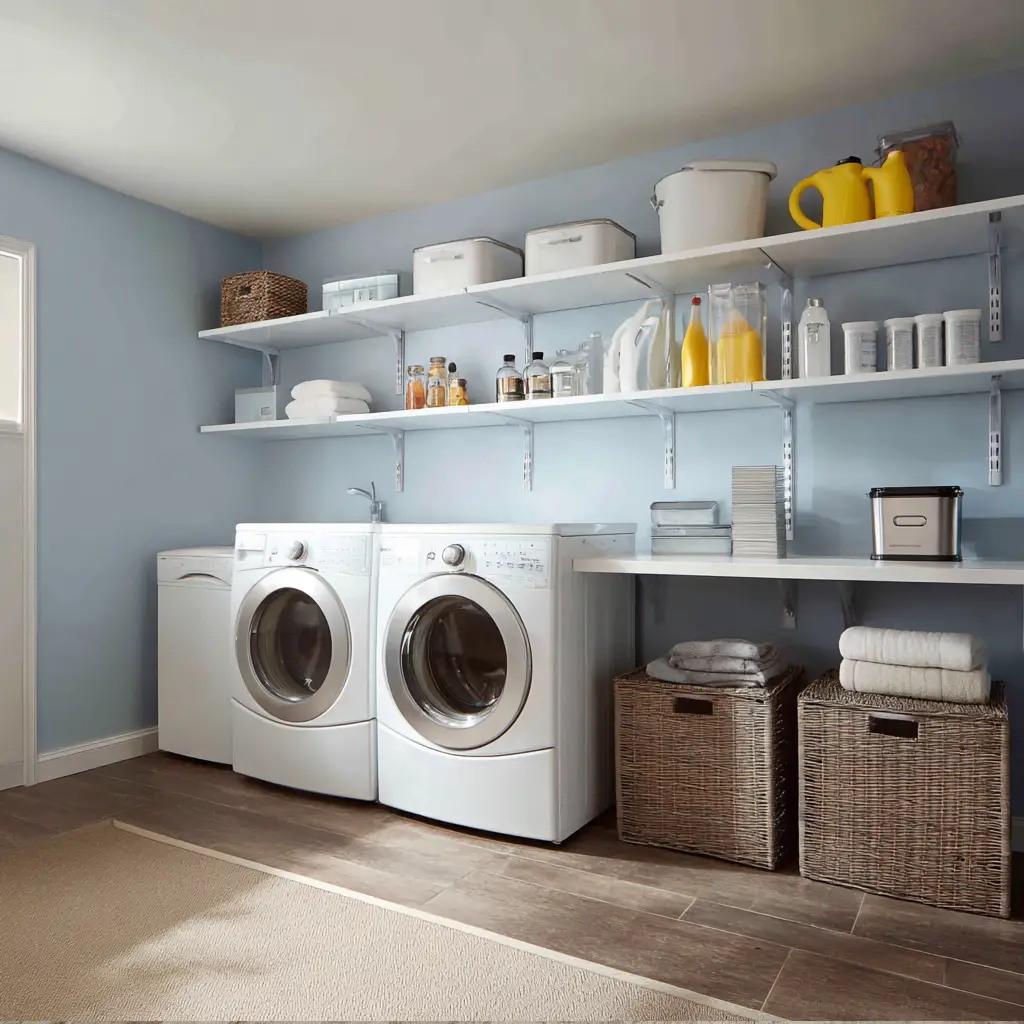
3. Use Curtains to Separate Spaces
Unfinished basements often serve multiple functions—storage, utilities, and more. Using fabric curtains or sliding panels to visually separate your laundry zone helps create a more defined and appealing space. It’s also a practical way to conceal unattractive elements like a sump pump or furnace while adding a pop of color or texture to the room.
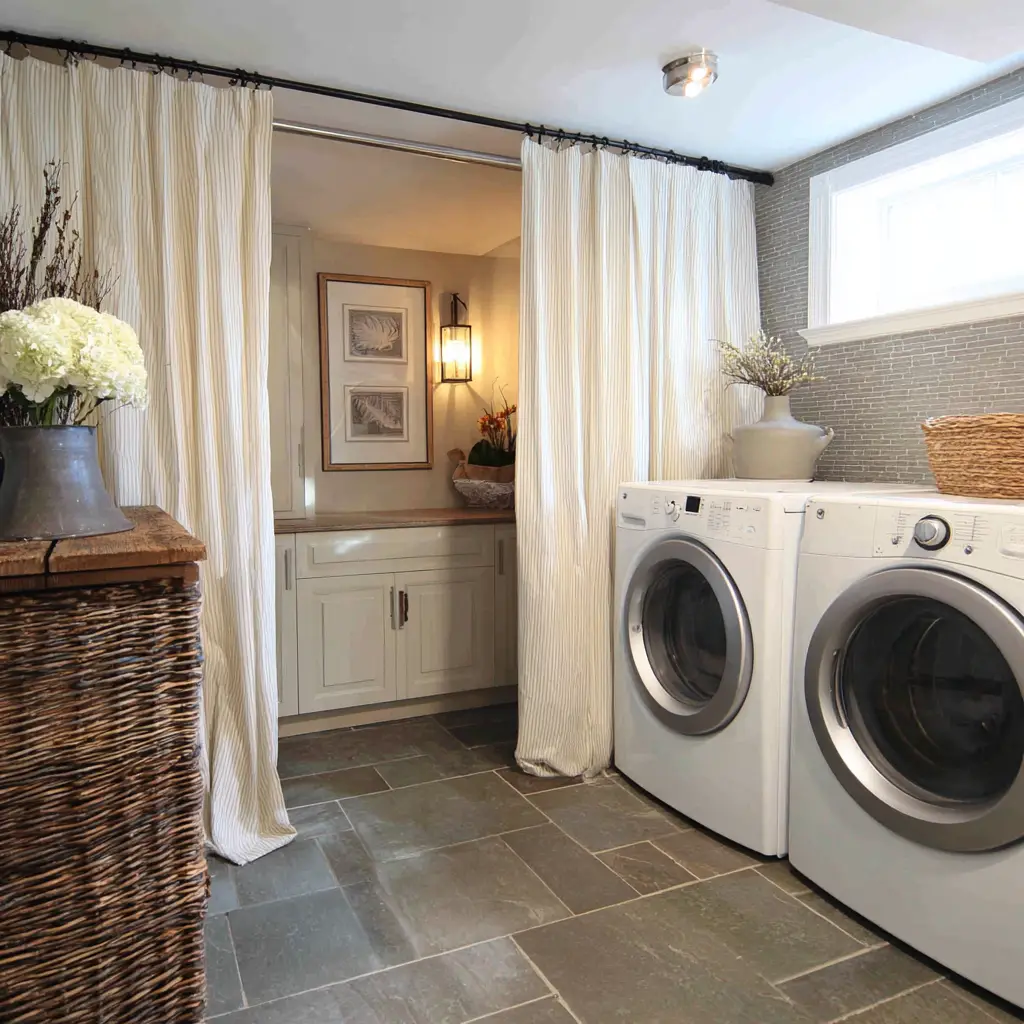
4. Paint the Walls and Ceiling
Even if your basement walls are exposed concrete or cinderblock, a coat of paint can make a huge difference. Choose a light color like white, beige, or soft gray to brighten the area and reflect more light. Painting the exposed ceiling joists and ducts in a uniform tone (such as matte black or white) can give the room a cleaner, more cohesive look without the cost of drywalling.
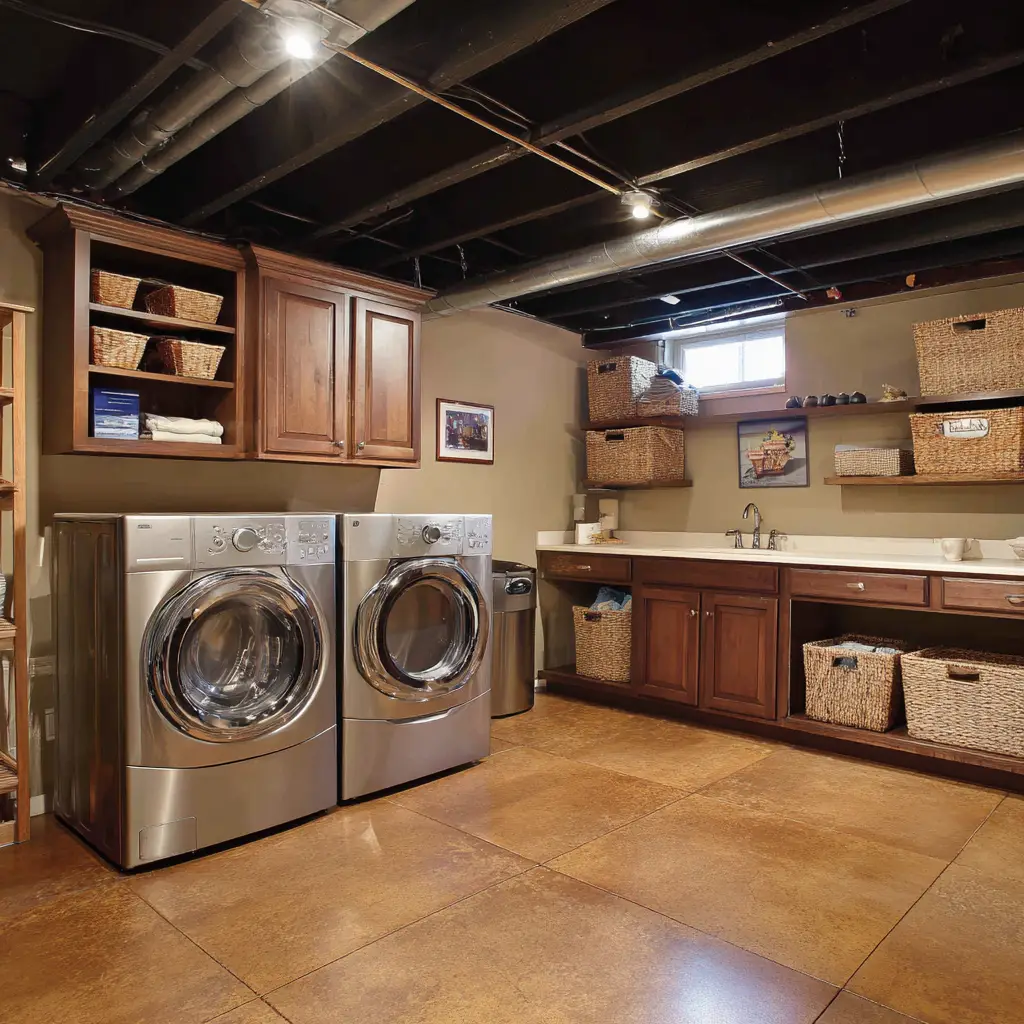
5. Set Up a Folding Station
Creating a designated space for folding clothes can improve your laundry routine and reduce mess. A simple wood or laminate countertop installed above front-loading machines works perfectly. If your machines are top-loaders, consider placing a freestanding table nearby. Not only does this provide a functional surface, but it also helps define the laundry zone in an open basement.
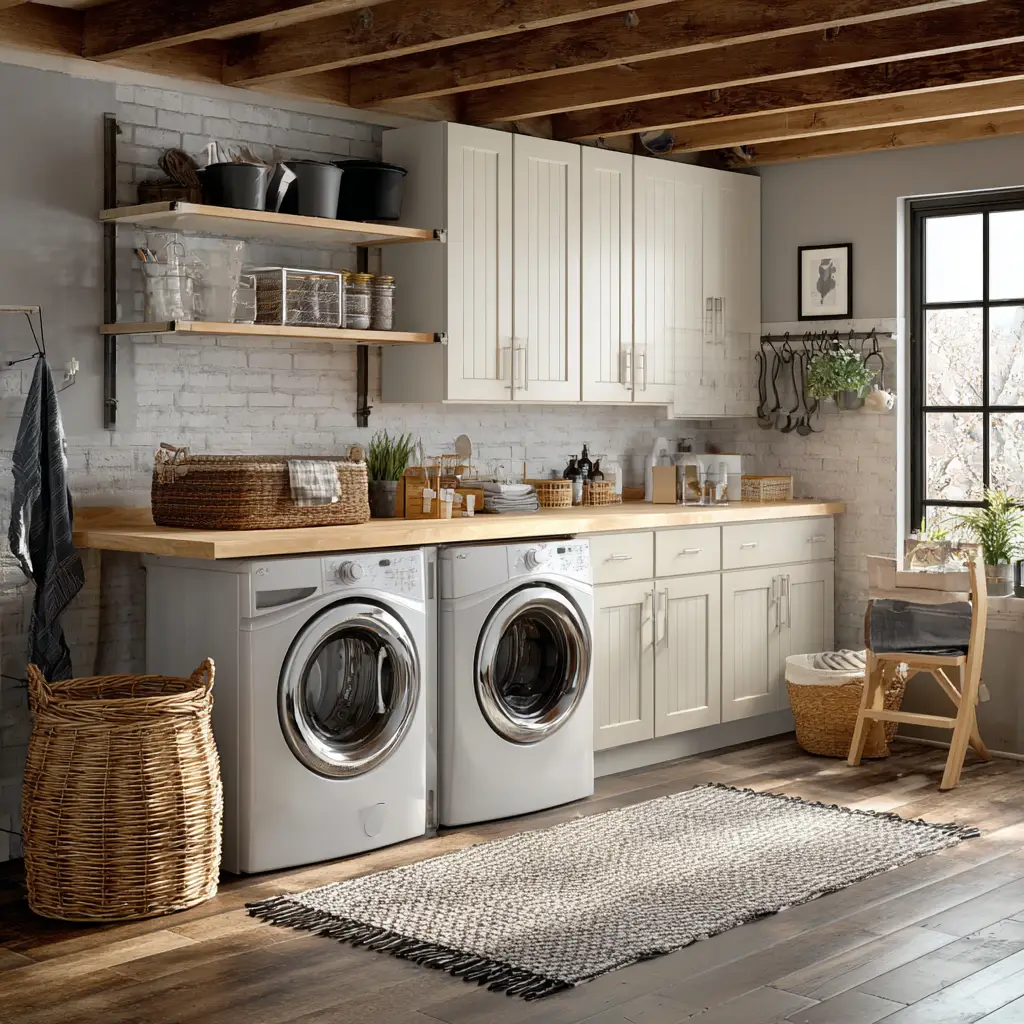
6. Hang a Pegboard Organizer
Pegboards aren’t just for garages—they’re excellent for keeping laundry tools visible and accessible. Install a pegboard on the wall near your machines to hang lint rollers, scissors, clothespins, cleaning brushes, or small baskets. It adds a sense of order to the space and can be customized with hooks, bins, and paint to match your style.
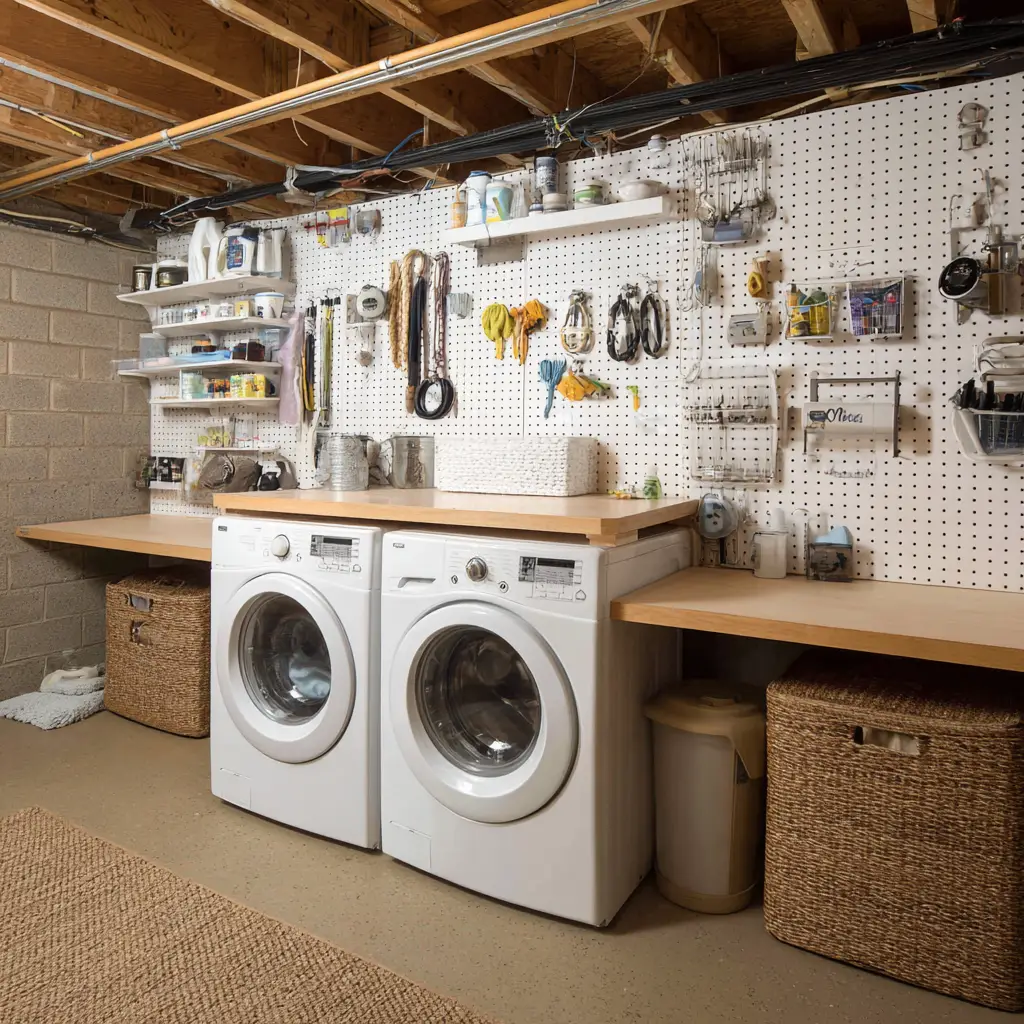
7. Add Utility Cabinets or Lockers
In an unfinished basement, closed storage helps keep the room looking organized and protects your supplies from dust or moisture. Metal utility cabinets or vintage lockers are durable, practical, and can add an industrial aesthetic. They’re great for storing laundry detergent, paper products, seasonal linens, and even toolkits.
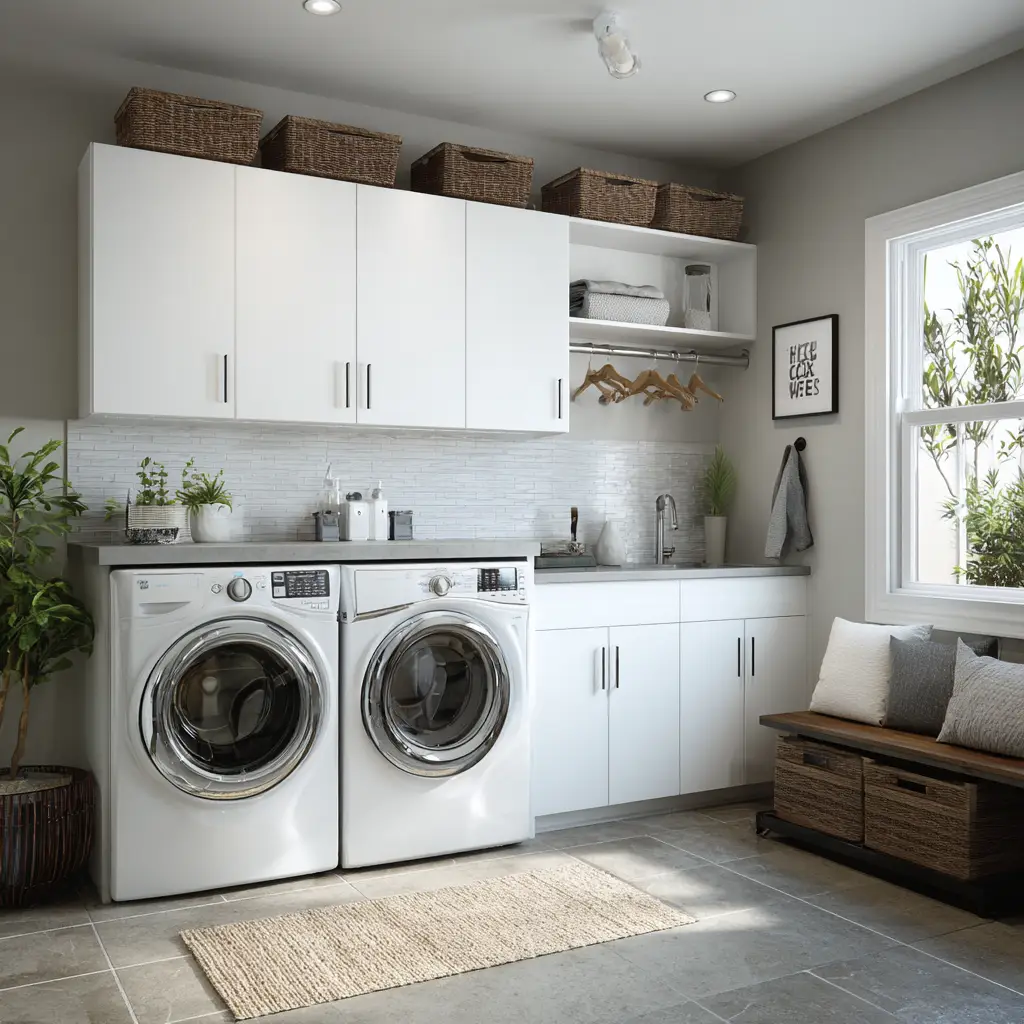
8. Install Better Lighting
Most unfinished basements come with bare bulbs or dim lighting, which makes laundry feel like a chore. Swapping those out for brighter LED shop lights or energy-efficient fixtures can dramatically improve the look and function of the space. Consider task lighting over the machines or folding table, and use daylight bulbs to make the space feel more welcoming.

9. Use Rolling Hampers or Carts
Laundry often involves moving heavy loads around, especially in larger basements. A set of rolling laundry hampers or utility carts can make the process easier. They let you transport clothes from washer to dryer and then over to a folding station or up the stairs with less effort. Look for ones with multiple compartments to sort clothes by color or family member.
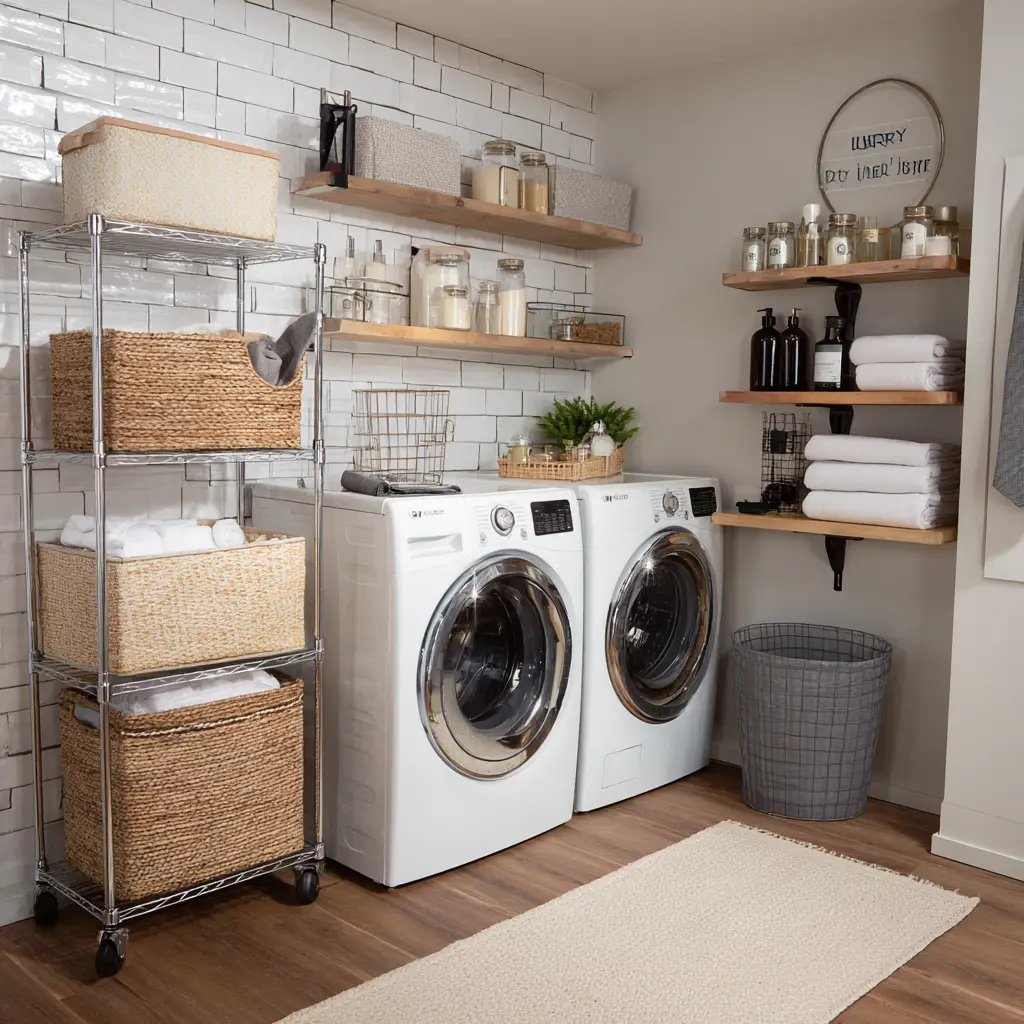
10. Introduce Area Rugs or Mats
A simple area rug can make the laundry space feel warmer and more comfortable, especially if you’re standing on concrete for long periods. Choose low-pile, washable rugs that are easy to clean and won’t trap moisture. Placing a cushioned mat in front of the machines can also reduce fatigue while adding a touch of homeyness.
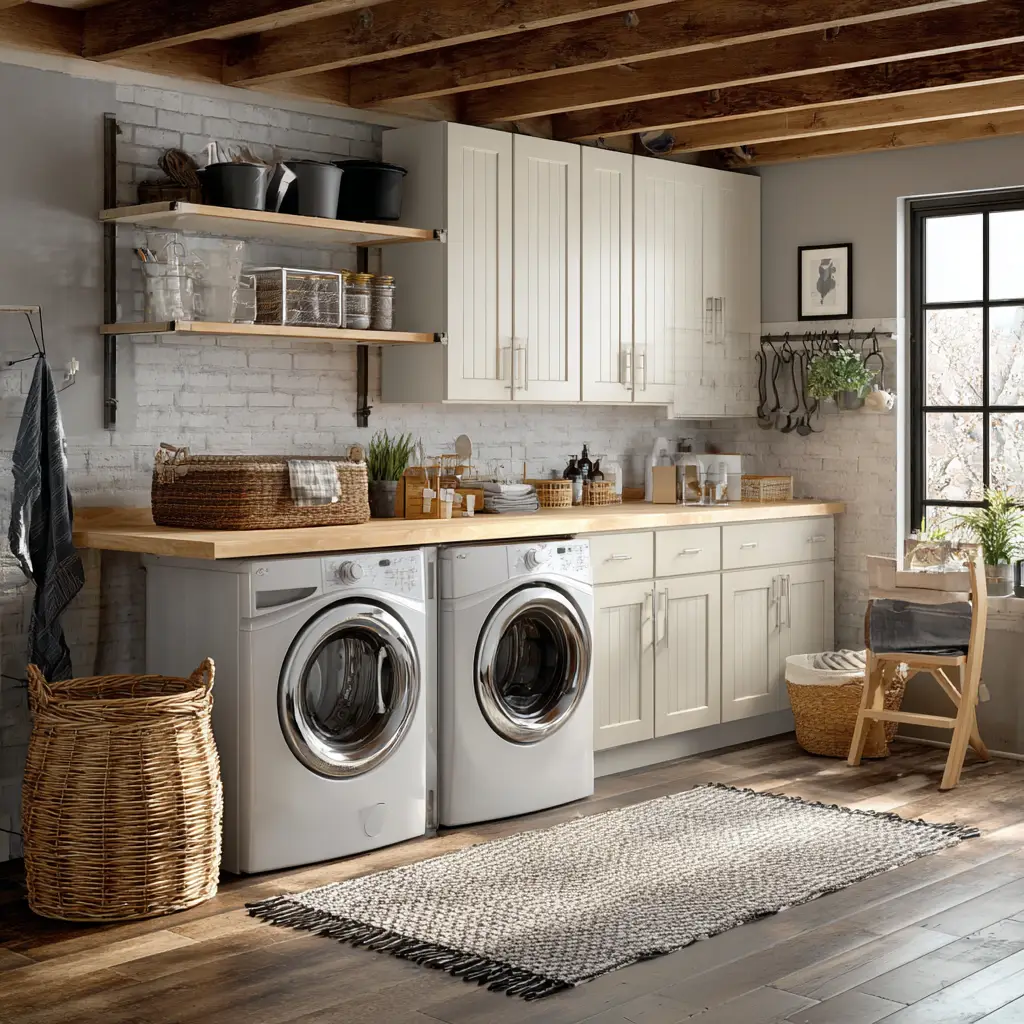
11. Try a Utility Sink Upgrade
A utility sink is a laundry room MVP, especially when dealing with hand-wash items or pre-treating stains. If your basement already has one, consider upgrading to a deeper basin or stainless steel version that’s more durable and easier to clean. If you don’t have a sink yet and plumbing allows, installing one can be a game-changer for your laundry workflow.
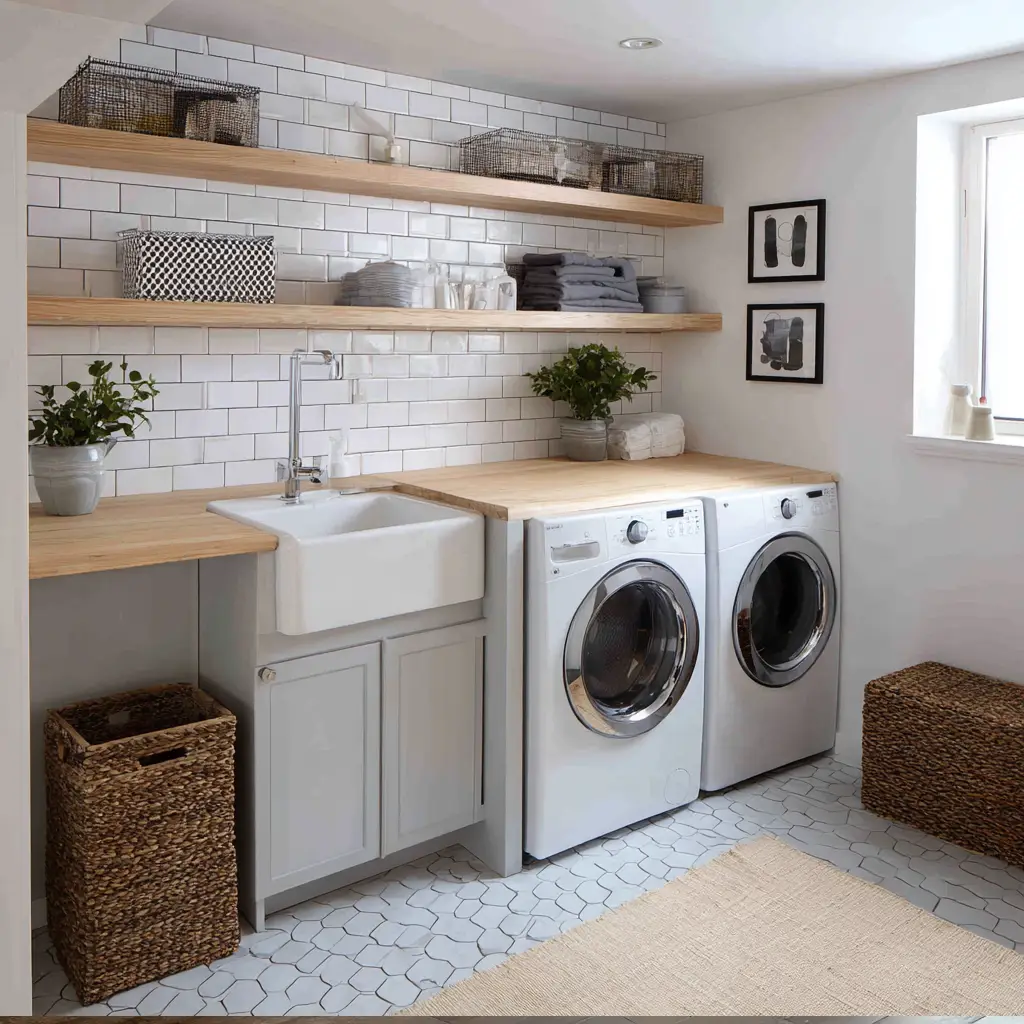
12. Create a Clothes-Hanging Zone
Air-drying clothes saves energy and prolongs fabric life. In an unfinished basement, you can mount a hanging rod to the wall or ceiling, or install a retractable drying rack that tucks away when not in use. If you’re tight on space, even a simple tension rod can work wonders. Just make sure it’s placed in a well-ventilated spot.
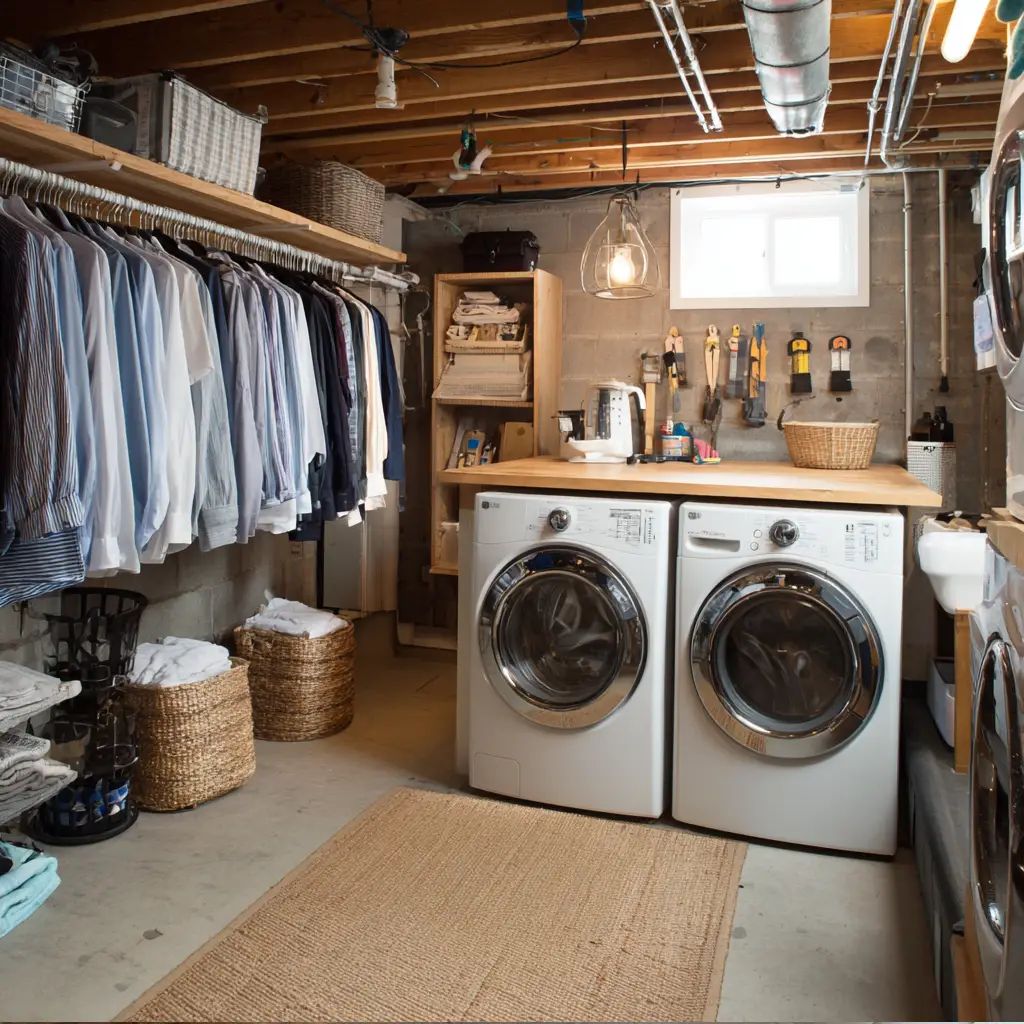
13. Embrace Industrial Design
Instead of trying to hide the fact that your basement is unfinished, consider working with what you have. Exposed brick, pipes, beams, and ductwork can all be assets in an industrial-inspired design. Use materials like galvanized metal, reclaimed wood, and concrete to create a stylish, raw look that feels intentional and modern.

14. Personalize with Art or Decor
Even utility spaces benefit from a few decorative touches. Hang waterproof or canvas art, place a mirror to reflect light, or add a fun sign with a quote about laundry. Small touches like these make the space feel more livable and personal, helping turn a utilitarian zone into a part of your home you actually enjoy using.
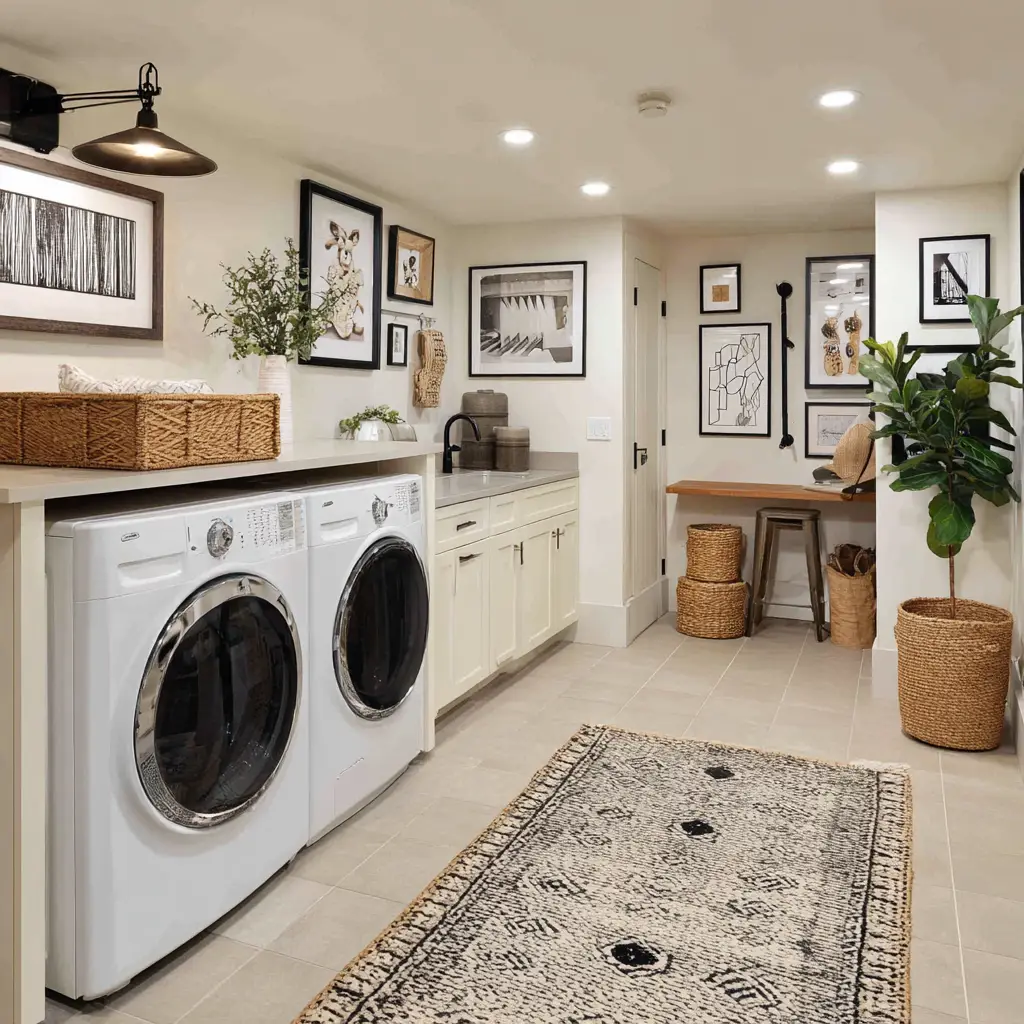
15. Use Waterproof Storage Bins
Humidity and occasional leaks can be a concern in unfinished basements. Use sealed plastic storage bins to protect your supplies and keep things organized. Label each bin for towels, rags, out-of-season bedding, or cleaning products. Stack them neatly on open shelving or tuck them under tables to save space.
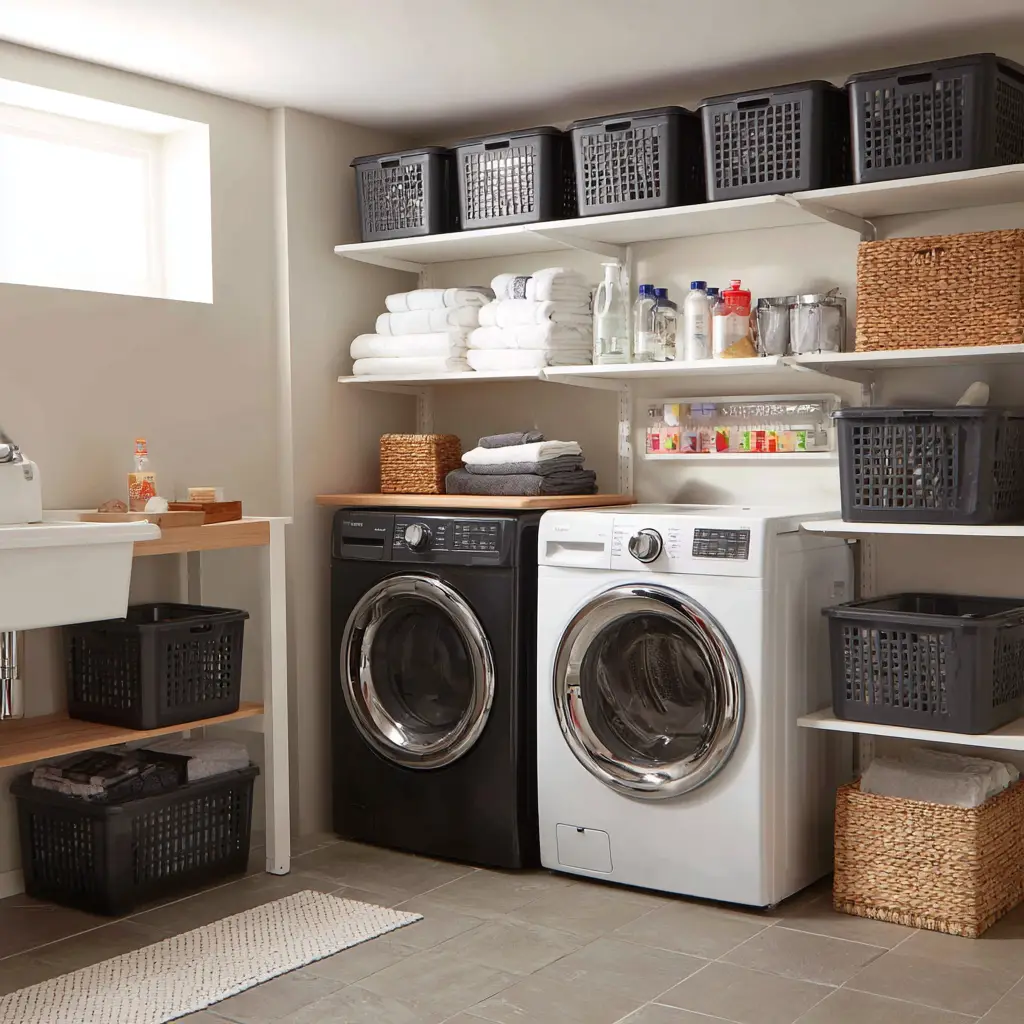
FAQs About Unfinished Basement Laundry Rooms
Can I put a washer and dryer in an unfinished basement?
Yes, as long as the space has the necessary hookups (water, electrical, and drainage), it’s perfectly fine to install laundry machines in an unfinished basement. Just be sure the area is relatively dry and well-ventilated. If moisture is a concern, consider installing a dehumidifier.
Do I need to finish the walls before creating a laundry room?
Not at all. Many homeowners create stylish and functional laundry rooms without drywall. Painting concrete walls or covering them with utility panels or curtains can be just as effective—and far more budget-friendly.
How do I reduce the basement laundry smell?
Good air circulation is key. Install a small exhaust fan, keep windows open when weather allows, and clean your machines regularly. Using odor absorbers like baking soda or charcoal in bins can help keep musty smells at bay.
Is it expensive to renovate a basement laundry room?
It depends on how much you want to change. Many of the ideas listed above—like painting, adding shelves, or installing vinyl flooring—can be done for under $500. A full remodel with drywall, plumbing, and new cabinetry will cost more, but small updates can still dramatically improve the space.
Can I hide exposed pipes and ductwork?
Yes. You can box them in with inexpensive plywood, use curtains to conceal them, or even embrace the look with paint. Many homeowners use exposed features as part of an industrial-style design that feels intentional rather than unfinished.
Conclusion
Your basement may not be finished, but that doesn’t mean your laundry room can’t be. With thoughtful choices—from storage and lighting to flooring and organization—you can create a space that’s efficient, comfortable, and even stylish. Whether you’re embracing an industrial look or just trying to make laundry less of a hassle, these ideas offer practical ways to make the most of your unfinished basement. A little creativity goes a long way in transforming a forgotten corner into a purposeful part of your home.
